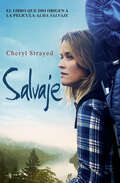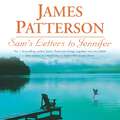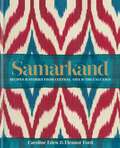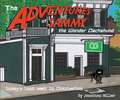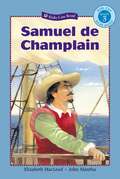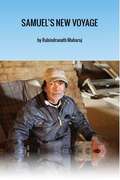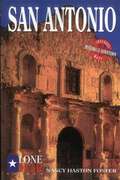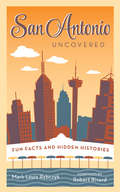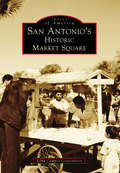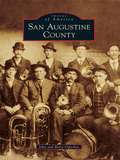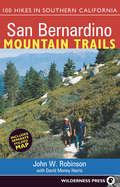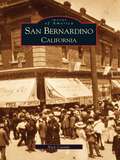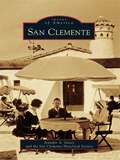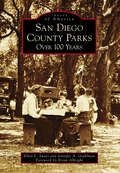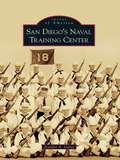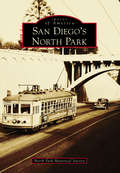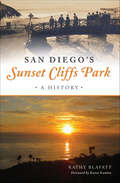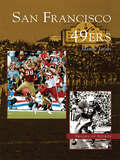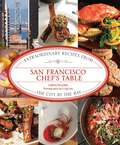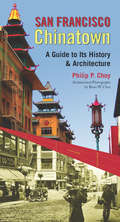- Table View
- List View
Salvaje
by Cheryl StrayedLa historia de los 1800 kilómetros que la joven autora anduvo en su recorrido a pie por la cordillera del Pacífico de los Estados Unidos. Con veintidós años creía que lo había perdido todo en la vida. Tras la muerte de su madre y tomar la decisión de separarse, sus hermanos se dispersaron y ella se quedó sin pilares sobre los que construir su vida. Cuatro años después de la muerte de su madre toma la decisión más impulsiva de su vida: recorrer el camino del las Cumbres del Pacífico, una ruta de senderismo que recorre toda la costa oeste de los Estados Unidos, desde el desierto Mojave en California y Oregon al estado de Washington. Y decide hacerlo completamente sola. Sin ninguna experiencia en senderismo, y ni tan solo habiendo pasado jamás una noche al aire libre, para ella se trataba de una idea, vaga y extravagante y prometedora.Pero esa promesa se convirtió en la necesidad de volver a juntar las piezas del rompecabezas en que se ha convertido su vida. Narrada con suspense, estilo, sentido del humor y ternura, Savaje consigue atrapar el miedo y los placeres en la vida de una joven que se encuentra en el proceso de forjar su vida contra toda expectativa, en el viaje que la volvió loca, que la fortaleció y que acabó por sanarla. La crítica ha dicho...«Espectacular...Te atrapa... Una aventura que te quita el aliento y una profunda reflexión sobre la naturaleza del dolor y la supervivencia. Un triunfo a nivel literario y personal.»New York Times Book Review «Un libro ameno y a ratos duro, que hará las delicias de senderistas y amantes de la buena literatura con las peripecias de una joven en procesode reconstrucción, a lo largo del viaje que la volvió loca, que la fortaleció y que terminó por sanarla.»Evadium
Sam's Letters to Jennifer
by James PattersonWhen her beloved grandmother is hospitalised, Jennifer returns to the lakeside home where she spent a magical childhood. There she finds a package of letters addressed to her that tell of passion, intrigue and desire. This is the real tale of her grandmother's life. It's a shocking family secret, concealed for decades, and the most moving love story Jennifer has ever heard.Then comes the biggest surprise of all. Jennifer lets her guard down for a moment and is overcome by exhilarating new emotions. It might come with an unbearable cost - but her grandmother's letters make Jennifer think that love may help her find a way.
Sam's Letters to Jennifer
by James PattersonWhen her beloved grandmother is hospitalised, Jennifer returns to the lakeside home where she spent a magical childhood. There she finds a package of letters addressed to her that tell of passion, intrigue and desire. This is the real tale of her grandmother's life. It's a shocking family secret, concealed for decades, and the most moving love story Jennifer has ever heard.Then comes the biggest surprise of all. Jennifer lets her guard down for a moment and is overcome by exhilarating new emotions. It might come with an unbearable cost - but her grandmother's letters make Jennifer think that love may help her find a way.(P)2012 Headline Digital
Samarkand: Recipes And Stories From Central Asia And The Caucasus
by Caroline Eden Eleanor Ford Eleanor SmallwoodWinner of the Guild of Food Writers Food and Travel Award 2017'This is a book to delight food lovers, travel hounds and history buffs alike.' The Telegraph'As an armchair traveler, I was led by Caroline Eden's firsthand account of journeys to the Uzbek city of Samarkand and other exotic destinations, then lured into the kitchen by Eleanor Ford's fine recipes' New York Times'A particularly expansive and ambitious example of the genre. Imagine a Lonely Planet guide to Uzbekistan and beyond, with a hundred recipes.' LA Times'I am LOVING it! So interesting to see so many familiar but also lesser known recipes! Beautiful pictures too! Love the styling! Love it!' Sabrina GhayourOver hundreds of years, various ethnic groups have passed through Samarkand, sharing and influencing each other's cuisine and leaving their culinary stamp. This book is a love letter to Central Asia and the Caucasus, containing personal travel essays and recipes little known in the West that have been expertly adapted for the home cook. An array of delicious dishes will introduce the region and its different ethnic groups - Uzbek, Tajik, Russian, Turkish, Korean, Caucasian and Jewish - along with a detailed introduction on the Silk Road and a useful store cupboard of essential ingredients. Chapters are divided into Shared Table, Soups, Roast Meats & Kebabs, Warming Dishes, Pilavs & Plovs, Accompaniments, Breads & Doughs, Drinks and Desserts. 100 recipes are showcased, including Apricot & Red Lentil Soup, Chapli Kebabs with Tomato Relish, Rosh Hashanah Palov with Barberries, Pomegranate and Quince, Curd Pancakes with Red Berry Compote and the all-important breads of the region. And with evocative travel features like On the Road to Samarkand, A Banquet on the Caspian Sea and Shopping for Spices under Solomon's Throne, you will be charmed and enticed by this region and its cuisine, which has remained relatively untouched in centuries.
Sammy’s Last Week in Charleston (The Adventures of Sammy the Wonder Dachshund)
by Jonathan D. MillerSammy agrees to take a new job in a new city, to move sooner than he thought his last week in Charleston as he says his goodbyes and tries to pack in as much fun as he can, including his visit to Wonder Works!
Samuel de Champlain
by Elizabeth MacleodMeet Samuel de Champlain, explorer. The story of his exploration of the unknown lands of New France and his many adventures there is told in level-appropriate language.
Samuel's New Voyage: A Northwords Story (Northwords)
by Rabindranath Maharaj"Samuel's New Voyage" is Rabindranth Maharaj's contribution to Northwords, a cross-platform project that takes urban Canadian writers to some of the world’s most extreme environments. Introduced by award-winning journalist and radio personality Shelagh Rogers, Northwords is a collection of stories written by acclaimed Canadian authors as they experienced one of Canada’s most awe-inspiring northern national parks Torngat Mountains National Park, the country’s newest national park, and a place steeped in geological and human history. The cross-platform project, which includes a documentary film that follows the authors as they explored the harsh and stunning terrain, had adventures, and created these new works, adds to the continuing story of the North. The stories explore the idea of the North, and what happens when the country’s best writers tackle its most overwhelmingly beautiful places. Taking advantage of opportunities presented by transmedia integration, users can experience the stories in the writers’ own words through Anansi Digital, as well as learn more about their processes and what inspired them through interactive content. Users will have access to film and audio content, and together, these related media will create a larger story web, allowing the audience to truly immerse themselves in the sights, sounds, and stories of the North.
San Antonio
by Nancy Haston FosterThis easy-to-use guide gives you the history, highlights, and hot spots of the nation's eighth largest city. You get extensive listings of historical places, annual events, restaurants, accomodations, shopping areas, and more.
San Antonio Uncovered: Fun Facts and Hidden Histories
by Robert Rivard Mark Louis RybczykIt has been said that every Texan has two hometowns: his own and San Antonio. Its charm, colorful surroundings, and diverse cultures combine to make the Alamo City one of the most interesting places in Texas and the nation. In San Antonio Uncovered, Mark Rybczyk examines some of San Antonio's legends and ghost stories, takes a nostalgic look at landmarks that have disappeared, introduces some of the city's characters and unusual features, debunks a few local myths, and corrects some misconceptions.Rybczyk embraces San Antonio's peculiarities by chronicling the cross-country journey of the World's Largest Boots to their home in front of North Star Mall, the origins of the Frito corn chip and chewing gum, the annual Cornyation of King Anchovy, and Dwight Eisenhower's stint as the football coach at St Mary's University.The third edition of San Antonio Uncovered highlights San Antonio as a modern, thriving city with the feel of a small town that sees beauty in the old and fights to save it, even if it is something as seemingly insignificant as an old Humble Oil Station, and its diverse inhabitants as those who appreciate the blending of the old and the new at the Tobin Center and fight to save what's left of the Hot Wells Hotel.
San Antonio's Historic Market Square (Images of America)
by Edna Campos GravenhorstSan Antonio was founded in 1718. By 1730, the viceroy of New Spain had issued orders to map plazas, squares, and parks for the Canary Islanders who would be arriving in 1731. The plazas with their markets became the centers for business and entertainment. The first square was Plaza de Armas (Military Plaza); when the islanders arrived, they marked off the Plaza de las Islas (Main Plaza). Before the Civil War, Alamo Plaza was the center of commerce. As San Antonio grew, the markets needed to relocate. The construction of Municipal Market began in 1899. This market house, built in Paschal Square, was demolished in the 1930s, but the Municipal Market Annex, constructed in the 1920s, survived. The annex buildings would become El Mercado and Centro de Artes. In the 1970s, a permanent building for the farmers market was built in Hay Market Plaza. Today, these buildings, along with the historic buildings in the area, are known as Market Square.
San Augustine County
by Betty Oglesbee John OglesbeeSan Augustine has been called the "Eastern Gateway into Texas" for more than three centuries. Many immigrants crossed the Sabine River and followed El Camino Real to the little settlement nestled on each side of this ancient roadway. Alamo-bound David Crockett wrote his last letter to his daughter Margaret from San Augustine on January 9, 1836. Davy's words echoed the favorable impressions expressed by new arrivals to Texas: "I am hailed with hearty welcome to this country . . . The cannon was fired here in San Augustine on my arrival. What I have seen of Texas, it is the garden spot of the world, the best land and the best prospects for health I ever saw, and I do believe it is a fortune to any man to come here." San Augustine County still retains the charm of times past through her well-preserved 19th-century homes and churches. Images of America: San Augustine County profiles these cherished landmarks and others through the vintage photographs of local historical groups, family collections, and private archives.
San Bernardino Mountain Trails
by John W. Robinson David Money HarrisAfter more than 30 years in print, San Bernardino Mountain Trails remains the bible for Southern California hikers. This updated guide contains new trips as well as old favorites, covering 100 hikes that traverse San Bernardino National Forest, the Santa Rosa Mountains, and San Jacinto Mountains. Includes difficulty ratings, season recommendations, elevation profiles and other essential info, as well as historical photos and descriptions, including early mining operations and pioneer cabins. Includes separate folded map.
San Bernardino, California
by Nick CataldoStrategically located about 60 miles east of Los Angeles, San Bernardino was colonized in 1851 as an expansion outpost for the Mormon Church. Today, it is the county seat for the largest county in the United States. Captured here in over 200 vintage photographs is the history of this Southern California city and its role in the state's development for more than two centuries. Many famous, as well as infamous, faces have passed through the area, contributing to the rich history of the region, including Kit Carson, Wyatt Earp, President Lyndon Johnson, and early explorer Jedediah Smith. Featuring images from the San Bernardino Historical Society, this book brings readers back in time to the city's earliest development, from early Native American settlements, through the Mission period, the Mexican Rancho era, the arrival of Mormon families, the impact of the railroads, and up to the challenges of the 20th century.
San Clemente
by Jennifer A. Garey San Clemente Historical SocietyIn the 1920s, San Clemente founder Ole Hanson envisioned a "Spanish Village" on the Pacific coast halfway between Los Angeles and San Diego. His city would have streets that followed the natural contours of the land. Sunny beaches and perfect climate enticed many to settle in this charming community. Known for its hospitality and neighborly atmosphere, the city became host and home to dignitaries such as Pres. Franklin D. Roosevelt and Pres. Richard M. Nixon. Today, professional surfers, skateboarders, and small businesses call San Clemente home--the perfect place for work and leisure.
San Diego Chef's Table: Extraordinary Recipes from America's Finest City (Chef's Table)
by Maria Desiderata MontanaSan Diego is a vivacious and active food community whose eating habits are unpretentious yet familiar, conspicuous yet simple. Famous for supporting a health-conscious lifestyle, with an abundant supply of fresh and organic products at their fingertips, the attitude of the chefs and diners alike is friendly and laid-back. From kitchen celebrities and James Beard recognized chefs, to those who simply just love to cook, priding themselves on being eco-conscious, using only sustainable meats and seafood, the restaurants in San Diego are quickly becoming enchanting places, suitable for even the most discerning of palates. The colorful California modern cuisine will tempt your taste buds with fusions of imaginative textures and flavors. With recipes for the home cook from over 60 of the city's most celebrated restaurants and showcasing around full-color photos featuring mouth-watering dishes, famous chefs, and lots of local flavor, San Diego Chef's Table is the ultimate gift and keepsake cookbook.
San Diego County Parks: Over 100 Years (Images of America)
by Brian Albright Ellen L. Sweet Jennifer A. GrahlmanFrom its earliest park in 1913, the County of San Diego has more than 100 years of serving the public with unique park and recreational experiences while preserving significant natural and cultural resources. Officially, the San Diego County Board of Supervisors established the Department of Recreation in 1946. Today, the department manages over 50,000 acres of parks, campgrounds, trails, recreation centers, sports complexes, and ecological and open-space preserves. The county covers an area that includes coastline, mountains, deserts, lakes, lagoons, and other habitats�it is the nation�s most biologically diverse county�and the department�s properties mirror this biodiversity. They also contain sites that reveal the county�s history: Mexican-era ranchos, an overland stage station, remnants of an early gristmill, Victorian mansions, traces of flume systems, Depression-era construction projects, an 1887 boathouse, and parks that reflect the advent of early automobile tourism.
San Diego Noir (Akashic Noir Ser.)
by Maryelizabeth Hart"When it's done right, noir is a darkly delicious thrill: smart, sharp-tongued, surprising. The knife goes in at the end with a twist. San Diego Noir, a new 15-story collection by some of the region's best writers, has all that going for it, and the steady supply of hometown references makes it even more fun."--San Diego Union-TribuneBrand-new stories by: T. Jefferson Parker, Jeffrey J. Mariotte, Martha Lawrence, Diane Clark & Astrid Bear, Debra Ginsberg, Morgan Hunt, Ken Kuhlken, Taffy Cannon, Don Winslow, Cameron Pierce Hughes, Lisa Brackmann, Gabriel R. Barillas, Gar Anthony Haywood, and Maria Lima.Launched with the summer '04 award-winning best seller Brooklyn Noir, Akashic Books continues its groundbreaking series of original noir anthologies. Each book is comprised of all-new stories, each one set in a distinct neighborhood or location within the city of the book.San Diego is home to miles of beaches, Balboa Park, a world-famous zoo, and some of the country's most expensive home and resort real estate. Yet the city also houses a few items that aren't actively promoted by the visitor's bureau: a number of the country's most corrupt politicians, border-related crimes, terrorists, and the occasional earthquakes. A noir feast!In the 50-plus years since Raymond Chandler set Playback in Esmeralda, his name for La Jolla, the population has grown by more than a million, and crime has proliferated as well. San Diego of the past and the present offers the book's contributors a rich selection of settings, from the cross on Mount Soledad to the piers of Ocean Beach, and perpetrators and victims from the residents of its wealthiest enclaves to the inhabitants of its segregated barrios.
San Diego de A a Z
by Laura Roberts Letícia Maria CarvalhoSan Diego de A a Z (por Laura Roberts) Cansado dos velhos e repetitivos guias de viagem? Saiba aonde ir e o que fazer em San Diego com a ajuda de quem vive lá! Esse guia em ordem alfabética examina San Diego – e o turismo – a partir de um ângulo totalmente novo, permitindo que o leitor explore a cidade no seu próprio ritmo. Aprenda sobre... • os favoritos dos habitantes locais •atrações fantásticas • peculiaridades culturais •e divirta-se com uma trívia que você não vai encontrar em nenhum outro guia! >>> Para visitantes E residentes Não importa se está visitando a cidade pela primeira vez, ou se morou lá durante toda a sua vida, San Diego de A a Z vai surpreender você com uma porção de fatos, números e experiências pessoais da autora Laura Roberts. Explore a America’s Finest City em ordem alfabética, começando pelo Birch Aquarium e terminando com palavras em espanhol que iniciam com a letra Z. >>> Repleto de comentários Saiba mais sobre os marcos, restaurantes, bares, museus, livrarias, bairros e peculiaridades culturais de San Diego – e muito mais. Indispensável se você quiser saber a diferença entre um viajante e um flâneur experiente. Peça seu exemplar hoje e descubra o que você está perdendo. Gênero: VIAGEM / Estados Unidos / Oeste / Pacífico (AK, CA, HI, NV, OR, WA) Gênero secundário: VIAGEM / Referência Língua: Português Keywords: Número de palavras: 20.666
San Diego de la A a la Z
by Laura Roberts Carolina Stroschein¿Cansados de las mismas guías de turísticas de siempre? ¡Aprendan a dónde ir y qué hacer de una local! Esta guía de la ciudad en orden alfabético mira a San Diego –y al turismo– desde un ángulo completamente nuevo y les permite a los lectores pasear por la ciudad a su propio ritmo. Aprendan sobre... * Lugares favoritos de los locales * Atracciones turísitcas * Rarezas culturales * Y disfruten de un conocimiento general único que no encontrarán en ningún otro libro. Ya sea que se encuentren en la ciudad por primera vez o que sean residentes desde hace tiempo, San Diego de la A a la Z los sorprenderá y deleitará con muchos hechos, figuras y experiencias personales de la autora Laura Roberts. Exploren en orden alfabético mientras recorren la mejor ciudad de los Estados Unidos, comenzando por el Acuario Birch y finalizando con frases en español que contienen la letra Z. Aprendan más sobre los hitos, restaurantes, bares, museos, librerías, barrios y rarezas culturales de San Diego. ¡Y mucho más! Una lectura obligada para los viajeros sagaces o para los paseantes expertos.
San Diego's Naval Training Center (Images of America)
by Jennifer A. GareySan Diego's Naval Training Center (NTC) was commissioned on June 1, 1923, and for 70 years served as a young recruit's introduction to a naval career, beginning with nine weeks of basic orientation and organization training (BOOT) camp. Originally consisting of 135 acres adjacent to San Diego Bay, NTC eventually expanded to almost 550 acres with 300 buildings, landscaped promenades, parade grounds, and a concrete training "non-ship," the USS Recruit (a.k.a. USS Neversail), where recruits learned their first duties of seamanship. Advanced training schools were later added for military personnel learning specialized duties. After training hundreds of thousands of recruits, NTC was officially closed on April 30, 1997, and has since been transformed into San Diego's new and vibrant cultural center, Liberty Station.
San Diego's North Park
by North Park Historical SocietyHip and historic, North Park fascinates with its commercial energy and Craftsman charm. The community has always embodied an enterprising spirit. In the 1870s, cronies of Alonzo Horton mapped neighborhoods north of Balboa Park in a patchwork of individual subdivisions. Four decades later, John Spreckels's streetcars finally brought investors, residents, and shopkeepers, creating San Diego's slice of Bungalow Heaven. Baseball great Ted Williams played on North Park's fields, and tennis star Maureen Connolly trained on its courts. The local shops served as a regional commercial center after World War II, and the Toyland Parade attracted 300,000 spectators. Although decades of decline followed the exciting 1950s, North Park is flourishing again in a renaissance initiated by the restoration of the elegant North Park Theatre in 2005. This pictorial history tells the classic story of a boom, bust, and boom.
San Diego's Sunset Cliffs Park: A History (Landmarks)
by Kathy BlavattSunset Cliffs Park meanders along a mile and a half of San Diego's coastline, beckoning tourists and locals alike. These stunning cliffs inspired Albert Spalding, sportsman and visionary, to create a park in 1915 for all to enjoy. In the century since, many have left their mark, including the powerful Pacific Ocean. John Mills, an enterprising land baron, restored the original park, only to have it fall into neglect during the Depression and World War II. It became a popular spot for pioneering surfers and divers in the postwar boom, and the park's colorful landscape attracted artists and children. Join author Kathy Blavatt as she relates the many transformations of this beloved park and looks to its future.
San Francisco 49ers (Images of Sports)
by Martin JacobsFrankie Albert. Leo Nomellini. Bob St. Clair. Jimmy Johnson. Joe Montana. Jerry Rice. Bill Walsh. Steve Young. Ronnie Lott. Hugh McElhenny. Joe Perry. John Henry Johnson. Roger Craig. The legendary names roll off the tongue of every 49ers fan--never to be forgotten. Since 1946 when they were born into the All-American Football League, the 49ers have been pro football's most exciting and envied franchise. All of the cliffhangers and heartbreakers at grand old Kezar Stadium, and the blustering winds of Candlestick Park . . . where games were decided in the last seconds. The 49ers' unrivaled record includes 5 Super Bowl appearances and 5 victories, 17 NFC Western division titles, and an unbelievable 16 consecutive seasons with at least 10 regular-season wins. Eleven 49ers have been inducted into the NFL Hall of Fame. San Francisco 49ers is a must for every fan's library. Packed with over 200 rare archival photographs and stories and statistics, this collection is a detailed tribute to the 49ers' most memorable seasons, in all their undying glory.
San Francisco Chef's Table: Extraordinary Recipes from the City by the Bay (Chef's Table)
by Carolyn JungVery few areas in the world offer more diversity than the San Francisco Bay Area, a place that is without a doubt, “foodie central.” One reason for the major influx of the finest chefs and their restaurants here is perhaps twofold. First, the resident foodies love to eat out, not to mention the 16 million tourists that also visit here with food at the top of their to-do list. The second reason is perhaps the fact that the Bay Area offers chefs an incomparable proximity to fresh, local, and organic ingredients with which to cook, which anyone who cooks can tell you make all of the difference in the end result. With recipes for the home cook from over 50 of the area's most celebrated eateries and showcasing over 200 full-color photos featuring mouth-watering dishes, famous chefs, and lots of local flavor, San Francisco Chef's Table is the ultimate gift and keepsake cookbook for both tourists and locals alike.
San Francisco Chinatown
by Philip P. ChoySan Francisco Chinatown is the first "insider's guide" to one of America's most celebrated ethnic enclaves by an author born and raised there. Both a history of America's oldest Chinese community and a guide to its significant sites and architecture, San Francisco Chinatown traces the development of the neighborhood from the city's earliest days to its post-quake transformation into an "oriental" tourist attraction as a pragmatic means of survival. Written by architect and Chinese American studies pioneer Philip P. Choy, and featuring photographs and walking tours, the book details the triumphs and tragedies of the Chinese American experience in the United States.
